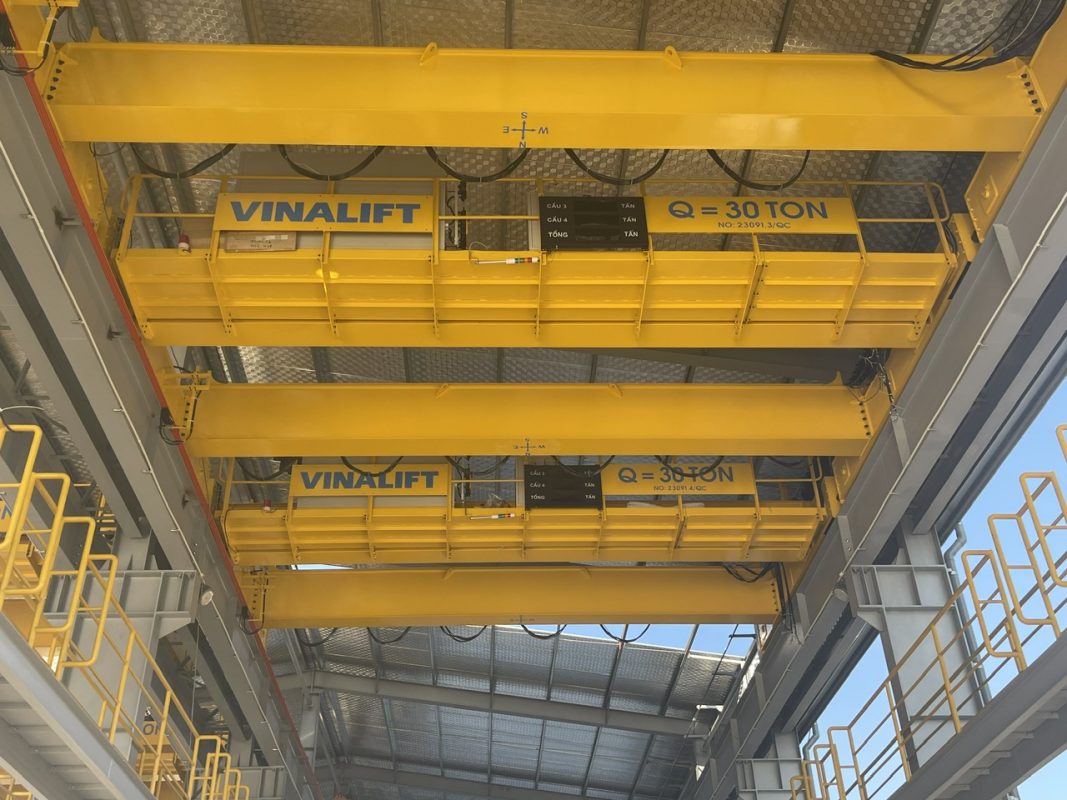Overhead cranes are essential equipment for lifting and moving heavy loads in factories, warehouses, and other industrial settings. They can lift loads weighing from a few tons to hundreds of tons, and move them horizontally and vertically. Overhead cranes can help to improve productivity, save time and labor, and ensure safety in the workplace. However, in order for an overhead crane to operate efficiently and safely, it is important to follow proper installation procedures. Here is a guide to the basic steps involved in overhead crane installation:
Step 1: Select the right overhead crane
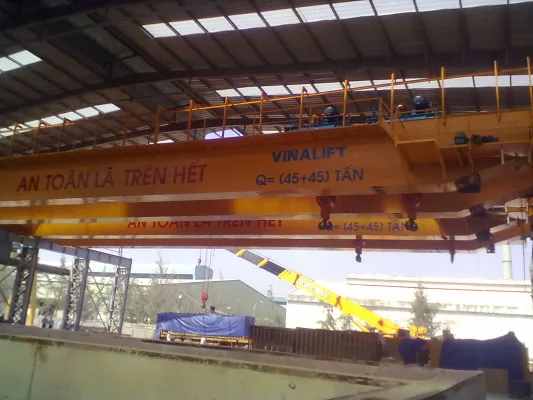
Before you can install an overhead crane, you need to select the right one for your needs. There are many different types of overhead cranes available, including single-girder overhead cranes, double-girder overhead cranes, Monorail cranes, and JIB cranes… Each type of crane has its own advantages and disadvantages, so you need to carefully consider your requirements before making a decision.
Here are some factors to consider when selecting an overhead crane:
- Lifting capacity: This is the most important factor, as it determines the weight of the loads that the crane can lift. You need to make sure that the lifting capacity of the crane is greater than or equal to the weight of the heaviest loads that you will be lifting.
- Span: This is the horizontal distance that the crane can reach. You need to make sure that the span of the crane is sufficient to cover the area where you will be using it.
- Height: This is the vertical distance that the crane can reach. You need to make sure that the height of the crane is sufficient to reach the loads that you will be lifting.
- Rails: Rails are used to guide the movement of the crane along the length of the building. You need to make sure that the rails are long enough to cover the area where you will be using the crane.
- Accessories: Accessories such as hoists, trolleys, and control systems are required for the operation of an overhead crane. You need to make sure that the accessories are compatible with the crane and meet your needs.
- Origin and manufacturer: The origin and manufacturer of the crane can affect its quality, price, and warranty. You should choose a crane from a reputable manufacturer with a good reputation for safety and quality.
SEE MORE: 10-TON DOUBLE-GIRDER OVERHEAD CRANE
XEM THÊM: CẨU QUAY ĐIỆN GIÓ TRÀ VINH
Step 2: Prepare the infrastructure for overhead crane installation
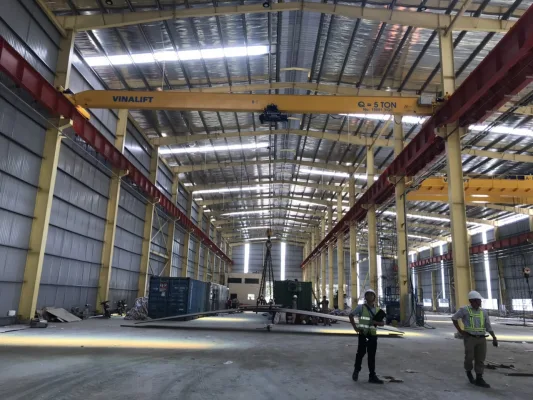
After choosing the appropriate crane, you need to prepare the infrastructure to install the crane. Infrastructure includes:
- Clean and clear the crane installation space, neatly place items, remove obstructions, and create service space
- Connect power lines and supply power to the crane, including horizontal wires, vertical wires, cables, electrical cabinets, switches, buttons… You need to make sure the power lines are arranged neatly and safely. Complete, no breaks, short circuits, or fires. You also need to check the voltage, current, fuse, protection, and ground… to match the crane’s requirements.
- Reinforce foundations and vertical pillars, if any. These are the main load-bearing parts, helping the crane to be stable and prevent overturning. You need to ensure that the foundation and vertical pillars are designed and constructed according to technical standards, have high durability, and can withstand the load and wind force of the crane. You also need to check the connection between the foundation, vertical pillar, and main beam of the crane, using high-strength bolts, screws, and nuts to fasten.
- Equip suspension system for overhead cranes, if any. These are the parts that help the suspended crane to be mounted on the factory ceiling, without the need for running rails. You need to ensure that the suspension system is designed and installed according to technical standards, has high durability, and can withstand the load and wind force of the crane. You also need to check the connection between the suspension system and the main beam of the crane, using high-strength bolts, screws, and nuts to fasten it.
Step 3: The overhead crane installation
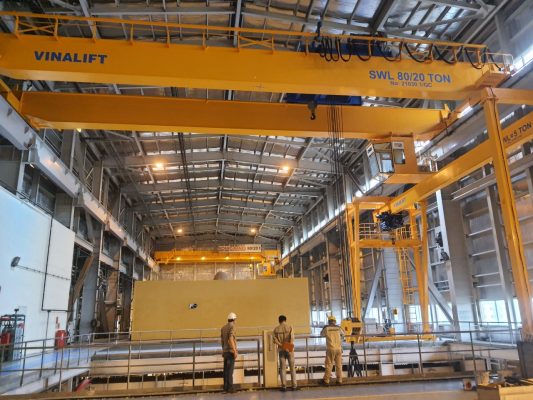
Once the infrastructure is in place, you can begin the installation of the overhead crane. The installation process should be carried out by qualified technicians who are familiar with the safety procedures involved.
The installation process generally involves the following steps:
- Installing the main girder: The main girder is the main support structure of the crane. It should be installed level and plumb, and securely attached to the foundation or columns.
- Installing the gantry beams: Gantry beams are used to support the main girder and provide additional stability. They should be installed level and plumb, and securely attached to the main girder.
- Installing the rails: Rails are used to guide the movement of the crane along the length of the building. They should be installed level and straight, and securely attached to the foundation or columns.
- Installing the hoist: The hoist is the device that lifts and lowers the load. It should be installed securely to the main girder or gantry beams.
- Installing the other accessories: Other accessories such as trolleys, control systems, and safety devices should be installed according to the manufacturer’s instructions.
Step 4: Test and inspect the crane
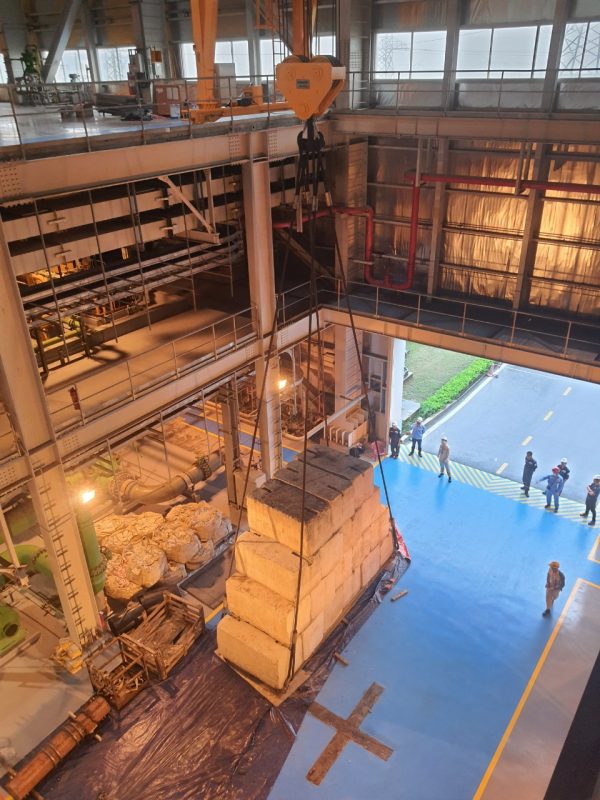
Once the overhead crane is installed, you need to test and inspect it before putting it into operation. The testing and inspection process should include the following steps:
- Crane test run: This is the step to check the operation of the crane, including lifting, horizontal movement, vertical movement, control, and alarm… You need to make sure the crane operates smoothly, without any problems. jam, vibrate, shake, make noise.
- Safety inspection: This is a step to check the safety of the crane, including checking the structure, connections, accessories, support equipment, load testing, function testing… You need to ensure the crane Meets national technical standards on labor safety for cranes and gantry cranes, as stipulated in QCVN 30:2016/BLDTBXH. You also need a crane safety inspection certificate issued by a competent authority.
Phone number: 0393416686
Email: minhhieuvinalift@gmail.com

